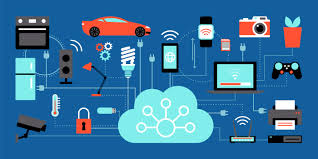IoT standards and interoperability are crucial for ensuring seamless communication and integration between different IoT devices, platforms, and systems. Here’s an overview of IoT standards and their importance in IoT data analytics and visualization:
- Communication Protocols:
Various communication protocols are used in IoT, such as MQTT (Message Queuing Telemetry Transport), CoAP (Constrained Application Protocol), and HTTP (Hypertext Transfer Protocol). Standards like these define the format, structure, and rules for exchanging data between IoT devices and platforms. Interoperability between different protocols enables data aggregation and analysis across heterogeneous IoT systems. - IoT Device Connectivity:
Standards like Bluetooth, Zigbee, and Wi-Fi provide specifications for IoT device connectivity. These standards ensure that IoT devices can connect and communicate with each other and with IoT platforms seamlessly. Interoperability between different connectivity standards enables diverse IoT devices to work together in an integrated ecosystem. - Data Formats and Models:
Standardized data formats and models facilitate data interoperability and integration. Standards like JSON (JavaScript Object Notation), XML (eXtensible Markup Language), and OGC (Open Geospatial Consortium) define common data structures and representations. Consistent data formats enable easier data exchange, aggregation, and analysis across different IoT devices, platforms, and applications. - Semantic Interoperability:
Semantic interoperability focuses on ensuring that data exchanged between different IoT systems maintains its meaning and context. Standards like the Semantic Web technologies (RDF, OWL, SPARQL) enable the integration and interpretation of diverse IoT data sources by providing a common framework for representing and querying data semantics. This facilitates advanced analytics and visualization that leverage the full context of IoT data. - Security and Privacy:
Standardization efforts also address security and privacy concerns in IoT. Standards like SSL/TLS (Secure Sockets Layer/Transport Layer Security) provide secure communication channels, while protocols like OAuth (Open Authorization) and XACML (eXtensible Access Control Markup Language) define access control mechanisms. Compliance with security and privacy standards ensures that IoT data analytics and visualization are performed in a secure and privacy-preserving manner. - Interoperability Frameworks:
Several organizations and alliances work on defining overall frameworks for IoT interoperability. For example, the Industrial Internet Consortium (IIC) and the Open Connectivity Foundation (OCF) focus on promoting open, standardized architectures and protocols for IoT interoperability. These frameworks help create a common foundation for IoT data analytics and visualization across different domains and industries. - Device Identification and Registration: Standards for device identification and registration, such as UUID (Universally Unique Identifier) or EUI-64 (Extended Unique Identifier – 64 bit), enable seamless integration and management of IoT devices across different platforms and ecosystems.
- Data Formats: Standardized data formats ensure that data exchanged between devices, applications, and platforms are structured and interpretable. Examples include JSON (JavaScript Object Notation), XML (eXtensible Markup Language), and CSV (Comma-Separated Values).
- Communication Protocols: Standardized communication protocols enable devices to exchange data and commands in a consistent and interoperable manner. Some commonly used IoT communication protocols include MQTT (Message Queuing Telemetry Transport), CoAP (Constrained Application Protocol), HTTP (Hypertext Transfer Protocol), and WebSocket.
Benefits of IoT Standards and Interoperability:
- Seamless Integration: Standards enable different IoT devices, platforms, and services to seamlessly integrate and communicate with each other, reducing complexity and effort required for integration.
- Scalability: Standardized interfaces and protocols allow for the smooth expansion and interoperability of IoT deployments, facilitating the scaling of applications and systems.
- Flexibility and Innovation: Interoperability standards promote innovation by allowing developers to build upon existing platforms and ecosystems, creating new applications and services.
- Cost Efficiency: Standardized components and interfaces reduce development costs by reusing existing solutions, eliminating the need for custom integrations and optimizing resource utilization.
Challenges of IoT Standards and Interoperability:
- Fragmentation: The IoT landscape is highly fragmented, with various proprietary protocols and standards. Achieving broad consensus and adoption of common standards across different industries can be challenging.
- Compatibility: Legacy devices may not support the latest standards, requiring additional effort for integration and interoperability.
- Security and Privacy: Developing robust security and privacy standards that can keep pace with rapidly evolving threats in IoT environments is an ongoing challenge.
Interoperability among IoT devices, platforms, and systems allows for efficient data aggregation, analytics, and visualization across a diverse range of data sources. It enables seamless integration of data from various IoT devices, enhances the scalability of IoT deployments, and promotes collaboration among different stakeholders in the IoT ecosystem.
Adhering to IoT standards and interoperability guidelines is crucial for avoiding vendor lock-in, ensuring long-term compatibility, and enabling the development of innovative IoT data analytics and visualization solutions that can leverage data from multiple sources.
